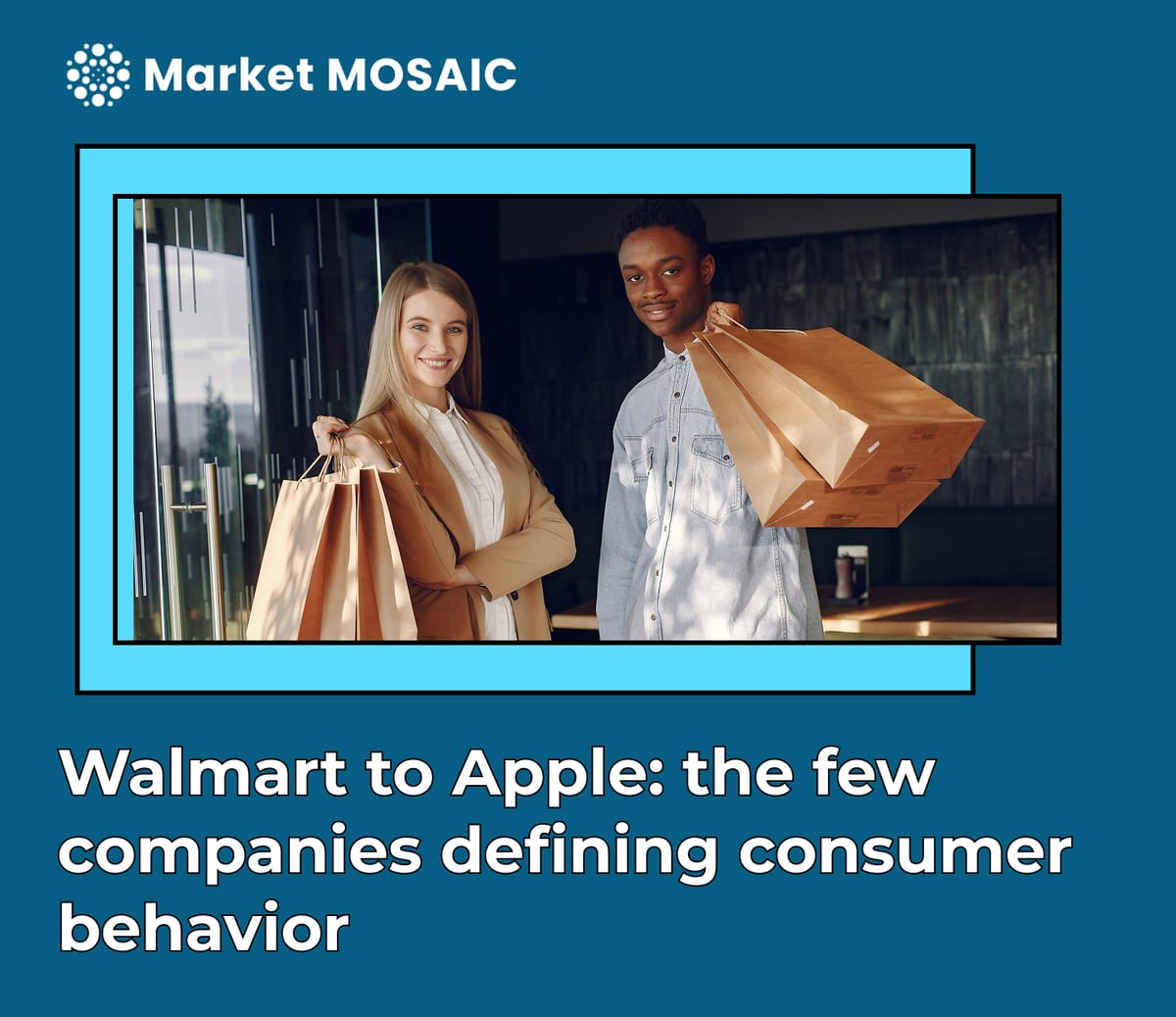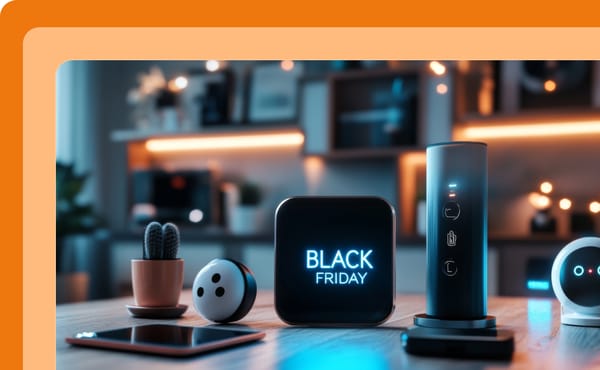Walmart to Apple: the few companies defining consumer behavior
The top 10 consumer giants now command $2.2T in revenue. Walmart and Amazon dominate on value and convenience, Apple and LVMH win on innovation and luxury, leaving the mid-market squeezed. For challengers, survival means sharper focus and faster moves.

The consumer economy has tilted dramatically toward a handful of giants. The top ten companies now command around $2.2 trillion in combined revenue, a concentration that shows more than dominance, rather it reflects structural power. Walmart, Amazon, Apple, LVMH, Nestlé, and PepsiCo are not just selling products; they are defining the terms of consumer behavior itself.
Scale as strategy
Walmart and Amazon illustrate how scale translates into expectation-setting. Walmart closed FY2025 with roughly $681 billion in revenue, while Amazon generated $638 billion in 2024. Their combined reach has taught consumers to expect speed, low prices, and seamless service as standard. Once those expectations are established, they cascade down the market, making it impossible for smaller players to ignore.
Apple represents a different kind of dominance. With $383 billion in annual revenue, it shows how premium positioning can scale when innovation is consistent and sticky. The iPhone is not just a device, it’s the center of an ecosystem that locks in loyalty and turns premium into mainstream.
Luxury tells its own story. LVMH, generating close to €85 billion annually, thrives on scarcity and craftsmanship. Even in weaker economies, LVMH’s brands keep pulling buyers. The market is splitting while wealthy consumers trade up, value seekers trade down, and mid-market brands are being squeezed out.Mid-tier players, from department stores to mainstream fashion labels, are losing loyalty and pricing power as consumers polarize. Investors follow the extremes, rewarding scale-driven value champions like Walmart or premium innovators like Apple and LVMH
In food and beverage, relevance is maintained through reinvention. Nestlé, with over CHF 93 billion in 2024 revenue, and PepsiCo, with $92 billion, have leaned hard into wellness. From plant-based proteins to sugar reduction, these shifts are not marketing plays but operating models designed to capture long-run consumer demand for health-conscious products.
Experience is the moat
Consumers are no longer tolerant of fragmented service. McKinsey reports that nearly four in five expect consistency across every channel, whether they shop online, in-store, or through a hybrid of both. The result is an environment where architecture decisions; shared data, unified customer IDs, and real-time inventory visibility become strategy decisions.
Retail giants are already moving. Walmart’s curbside pickup and Amazon’s frictionless Go stores are examples of how digital and physical channels can be stitched together into one continuous experience. Nestlé is doubling consumer data records with AI to personalize product design, while LVMH is using AR try-ons to bring luxury online. The thread running through all of these moves is the same: consistency is non-negotiable.
The business leader's playbook
If you’re building a consumer business in this market, the rules are clear. You need to own the customer experience end to end. That means no repetition, no disconnects, and no gaps between sales, service, and fulfillment. Customers expect a single conversation, and they punish inconsistency fast.
Business leaders need to pick a side. Either be the best value for money or deliver the best quality at a price people will pay. Apple proves premium works when it brings true innovation; LVMH proves heritage and craftsmanship can remain resilient even during downturns. The middle ground is where loyalty goes to die.
Health is now an operating principle, not a label claim. Nestlé and PepsiCo have shown that reformulation, whether plant-based proteins or functional hydration can shift repeat purchase behavior. The stock market pays attention to companies that hardwire wellness into their model rather than bolt it on through advertising.
Amazon shows that speed is a growth engine. Short planning cycles and frequent launches let it adapt quickly, scale fast, and stay ahead. Moving faster isn’t just an operational choice, it’s a strategy.
Finally, the price must be honest. Walmart’s everyday low price promise is not just a tactic but a brand truth that customers trust. If you can’t be the cheapest, deliver value in other ways, through service, time saved, or unique experiences. Consumers spot the difference quickly.
Business leaders benchmark
Walmart and Amazon set the bar for convenience; fast, cheap, and hassle-free. Apple proves people will pay more when innovation feels real. LVMH shows luxury still holds, as long as scarcity and storytelling stay intact.
The biggest players have trained consumers to expect consistency everywhere, and that raises the bar for everyone else. Smaller brands aren’t out of the game, but they don’t get to play by their own rules anymore. To survive, you need to pick your lane, move quicker than the rest, and design products so the experience is obvious. In a world shaped by giants, clarity and execution are the only real advantages.





